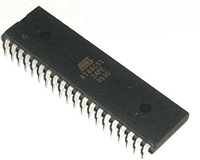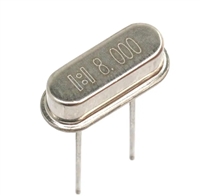ADT70
NULLA
NULLB
BIAS
2.5V
REFOUT
5V
OA
+V
ADT70
S
OUT
1k⍀
REF
RESISTOR
I
NODE C
I
OUTA
MATCHED
CURRENT
SOURCES
+IN
OA
NODE D
OUTB
؊IN
2.5V
REF
OA
؊IN
IA
INST
AMP
SHUT-
DOWN
SHUTDOWN
+IN
IA
NODE A
1k⍀
PRTD
RGA
RGB GND
SENSE
OUT
AGND ؊V
DGND
IA
S
NODE B
50k⍀
؊5V
Figure 28. 4-Wire Lead-Wire Resistance Cancellation Circuit
If PRTD has a tempco resistance of 0.00385 Ω/Ω/°C or sensi-
tivity of 3.85 Ω/°C, the system output voltage scaling factor will
be 5 mV/°C.
Eliminating Lead-Wire Resistance by Using 4-Wire
Configuration
In applications where the lead-wire resistance can significantly
contribute error to the measured temperature, implementing a
4-wire lead-resistance canceling circuit can dramatically mini-
mize the lead-wire resistance effect.
The gain of the instrumentation amplifier is normally at 1.30,
with a 49.9 kΩ gain resistor. It can be changed by changing the
gain resistor using the following equation.
In Figure 28, IOUTA and IOUTB provides matching excitation to
the reference resistor and the PRTD respectively. The lead-re-
sistance from the current source to the PRTD or reference resis-
tor is not of concern because the instrumentation amplifier is
measuring the difference in potential directly on the PRTD
(Node A) and reference resistor (Node C). Since there is almost
no current going from Node A and Node C into the amplifier’s
input, there is no lead-wire resistance error.
49.9kΩ
Instrumentation Amp Gain =1.30
RGAIN RESISTOR
In Figure 2 the ADT70 is powered by a dual power supply. In
order for the part to measure below 0°C, using a 1 kΩ PRTD,
–VS has to be at least –1 V. –VS can be grounded when the mea-
sured temperature is greater than 0°C using a 1 kΩ PRTD. GND
Sense (Pin 13), DGND (Pin 15), and AGND (Pin 2) are all con-
nected to ground. If desired, GND Sense could be connected to
whatever potential desired for an output offset of the instrumen-
tation amplifier. However, AGND and DGND must always be
connected to GND.
A potential source of temperature measurement errors is the
possibility of voltage differences between the ground side of the
reference resistor and the PRTD. Differences in lead-wire resis-
tance from ground to these two points, coupled with the 1 mA
excitation current, will lead directly to differential voltage errors
at the input of the instrumentation amplifier of the ADT70. By
connecting the ground side of the PRTD (Node B of Figure 28)
to the noninverting input of the op amp and connecting the
ground side of the reference resistor (Node D) to both the in-
verting input and the output of the op amp, the two points can
be forced to the same potential. It is not important that this po-
tential is exactly at ground since the instrumentation amplifier
rejects common-mode signals at the input. Note that all three
connections should be made as close as possible to the body of
the reference resistor and the PRTD to minimize error.
ADT70 will turn off if the SHUTDOWN pin(GND) is low,
and will turn on when SHUTDOWN pin becomes high (+VS).
If SHUTDOWN is not used in the design, it should be con-
nected to +VS.
The undedicated op amp in the ADT70 can be used to transmit
measured signal to a remote location where noise might be intro-
duced into the signal as it travels in a noisy environment. It can
also be used as a general purpose amplifier in any application de-
sired. The op amp gain is set using standard feedback resistor
configurations.
Single Supply Operation
Higher precision of matching the current sources can be
achieved by using a 50 kΩ potentiometer connected between
NULLA (Pin 5) and NULLB (Pin 6) with the center-tap of the
potentiometer connected to +VS (Pin 20). In Figure 27, the
ADT70’s Bias Pin (Pin 4) is generally connected to the
VREFOUT (Pin 3), but it can be connected to an external voltage
reference if different output current is preferred.
When using the ADT70 in single supply applications a few
simple but important points need to be considered. The most
important issue is ensuring that the ADT70 is properly biased.
To bias the ADT70, first consider the 1 kΩ PRTD sensor. The
PRTD typically changes from 230 Ω at –200°C to 4080 Ω at
800°C ± 1 Ω error. This impedance range results in an ADT70
output of –1 V to +4 V respectively, which is impossible to
–10–
REV. 0






 AT89C51单片机资料手册详细解析及应用示例
AT89C51单片机资料手册详细解析及应用示例

 CP2102资料手册解读:CP2102引脚说明、关键参数分析
CP2102资料手册解读:CP2102引脚说明、关键参数分析

 资料手册解读:UC3842参数和管脚说明
资料手册解读:UC3842参数和管脚说明

 一文带你了解无源晶振的负载电容为何要加两颗谐振电容CL1和CL2
一文带你了解无源晶振的负载电容为何要加两颗谐振电容CL1和CL2
